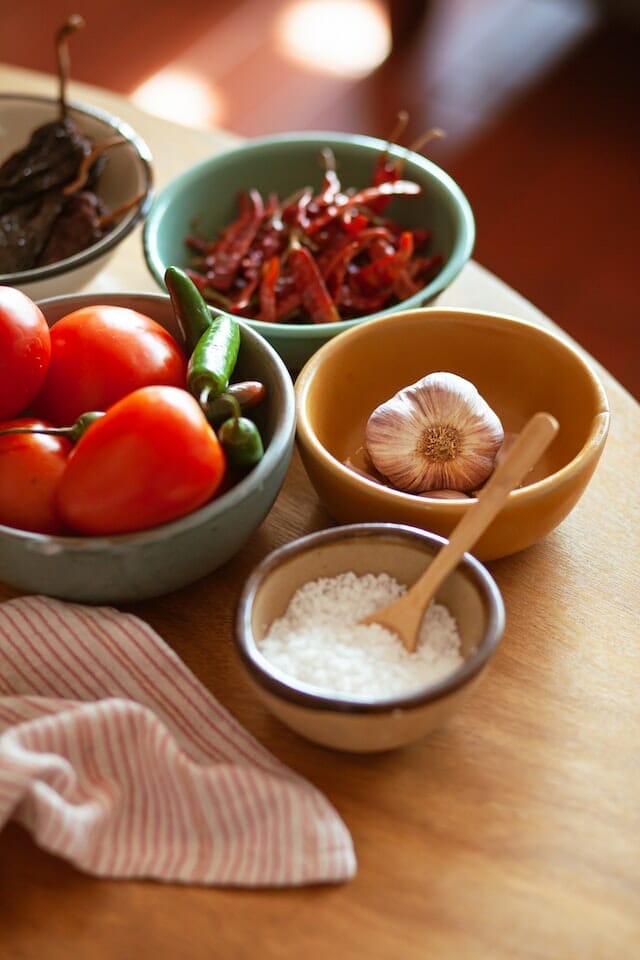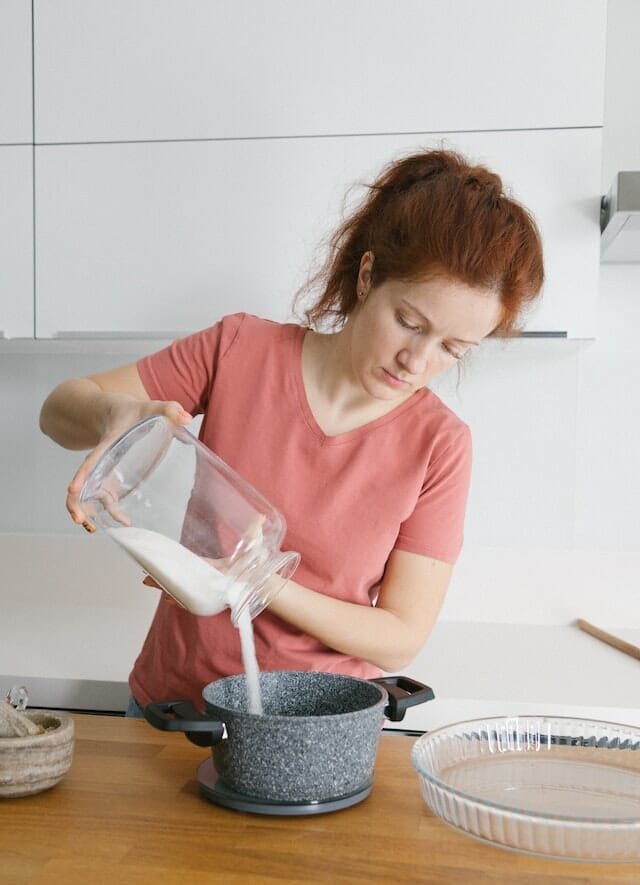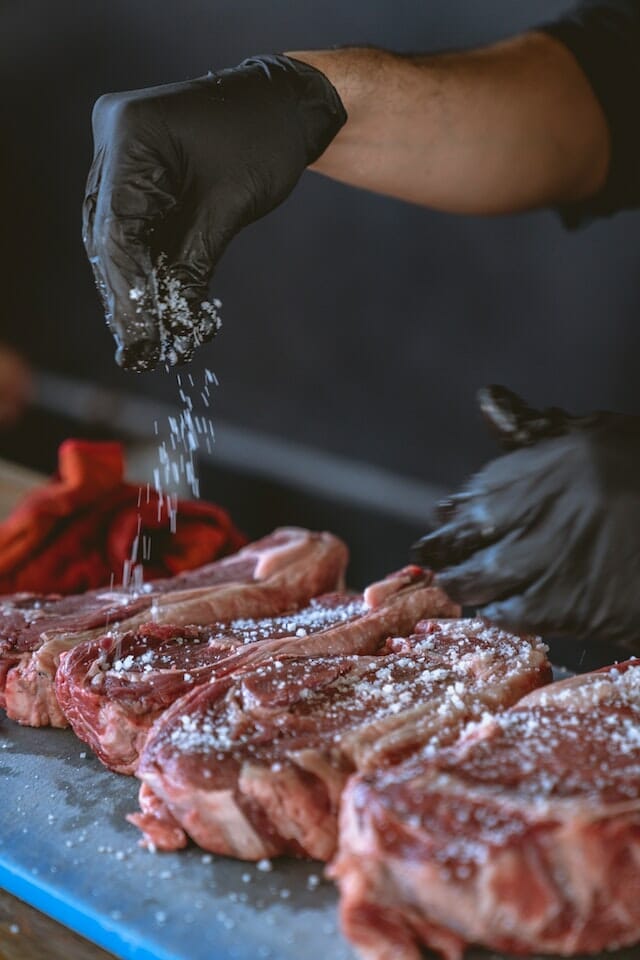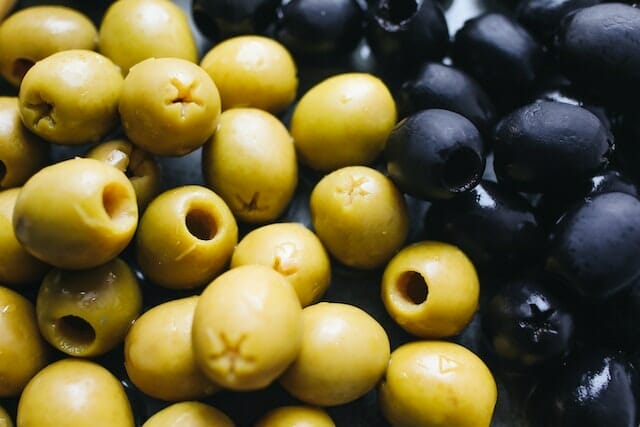As an Amazon Associate, I earn from qualifying purchases. In addition, I participate in several other affiliate programs that allow me to earn while I recommend products I love.
We’ve all been there, standing over the stove, tasting a recipe, and realizing it’s too salty.
Now you’re wondering how to counteract too much salt in the dish!
Fortunately, even the best chefs have had to work out how to make a dish less salty at some point or another.
But, of course, being a common problem makes it easy to find a solution!

If you’re wondering how to counteract too much salt, we go through all the best options for when you’ve added too much salt to food and need to resolve it!
Or if you’ve added too much pepper, we’ve got a handy guide for you here too!
Adding too much salt in food can also make it harder to pick up other dishes’ flavors, as it overpowers all the other elements.
Hence, it’s handy to know how to counteract too much salt in a dish.
Our Favorite Quirky Kitchen Gadgets
- Select-A-Spice Auto-Measure Carousel – Get your exact spice amount without measuring spoons with this spice carousel. Simply twist the dial for a perfect 1/4 teaspoon measurement!
- Silicone Utensil Rest with Drip Pad – This utensil rest keeps my countertops neat & drip-free!
- Snap N Strain Pot Strainer and Pasta Strainer – I love this strainer because it fits on all pots and pans while also being compact and easy to use!
- Herb Scissors Set – I use these scissors to cut and mince fresh herbs directly into any dish without the tedious work of cutting each herb or dirtying up a cutting board.
- Knife Sharpener – I love how quirky and nifty this rhino shaped knife sharpener is. It definitely puts the FUN in functional!
How to Counteract Too Much Salt in a Dish
If you need to know how to counteract too much salt in a dish, there are a few ways.
Choose between the below options depending on what you have handy in your kitchen.
Before we start, remember to add just a little bit when making additions to your dish before stirring and tasting.
Then you can keep adding a little bit at a time until the meal tastes perfect.
Add a splash of lemon juice.

Adding lemon juice is one of the best ways to reduce the taste of over-salty food.
However, stay moderate; you usually only want to add a splash, or the food will become too sour.
Add acidic foods to your dish.
Alongside lemon juice, many other acidic ingredients will also help you reduce saltiness.
White vinegar or apple cider vinegar is excellent options.
If it suits your dish, tomatoes also have an acidic flavor, so adding extra tomato sauce or paste will likewise do the trick.
Add cream (or creamy foods)
Like adding water, the cream is an excellent way to disperse salt in a dish, but it’s better for meals that should have a thicker texture.
For example, if you’re tomato pasta sauce is too salty (like this one), making it into a cream-based tomato sauce transforms it into a deliciously creamy pasta dish.
It might not be what you intended, but it’ll still hit the spot at dinnertime.
Aside from cream, you can also try other ingredients avocado, ricotta cheese, yogurt, whole milk, or non-dairy milk.
Add water to dilute the dish.
If you’re wondering how to fix too much salt in a soup, stew or sauce, water is one of the most effective ways!
While water won’t work for every dish, it can save the day for liquid-based meals.
The key is to add a little at a time so the dish doesn’t get too watery, but you can also counteract that by adding extra solid foods back into the recipe.
You could also use unsalted broths or extra sauce – whatever works best for the recipe.
Add sugar
A pinch of sugar goes a long way!
Whether it’s white sugar, brown sugar, or a sweetener, sugar can help even out a dish that’s too salty.

In fact, even a little maple syrup or honey will do the trick – choose whatever works best with the recipe or cuisine you’re cooking.
Like adding any additional ingredients, make sure you only add a little extra when using one flavor to neutralize another.
We want to avoid ending up with a dish overpowered by too many contrasting flavors!
Add bulk to the dish.
Add extra ingredients to your meal, so the salt is dispersed within a larger dish.
Adding bulk is the most straightforward option if you’re working out how to reduce saltiness in food.
Try adding extra vegetables, or use more of whatever formed the base of your dish; for example, pasta, noodles, or potatoes.
The best part is storing your extra food in the fridge to eat the next day.
Can you remove salt from a dish after preparing it?
You may be wondering how to remove salt from food after you’ve finished cooking.
While this is a good reminder of why we should taste our food while preparing it, that advice is too late if you’ve already finished cooking!
Thankfully, it can be easy to resolve.
For over-salted meats:
Give meats a quick rinse under running water to eliminate excess salt.

Then pat it dry with a clean paper towel. You may need to add other herbs or spices that got washed off in the process.
For over-salted vegetables:
Vegetables should be easy to remove excess salt from, as you should be able to rinse them in a colander or sieve under a running tap of cold water.
Tips for preventing food from getting too salty
Check the recipe before adding extra salt to your dish!
Do you even need to add extra salt?
Check your dish before adding even the first pinch of salt, especially if you’re usually ready-made sources or canned ingredients.
Many pre-prepared items already have salt added, so check the labels, or taste the recipe before adding more.
Sometimes dishes specifically call for low-sodium ingredients to avoid a dinner getting over-salty, for example.
Soy sauce and broths both come with low-sodium alternatives.

Olives, fish, and pickled foods also have a salty taste.
So, if you’ve chopped up olives into your pasta sauce, you don’t need to add much extra salt.
Buy a proper salt shaker and fix the lid if it gets loose!
One of the most common ways we end up with too salty food is because the salt shaker lid wasn’t attached properly.
Or else, on some cheap table salt containers, the holes are too big to shake out the salt in small amounts accurately.

Another way to counteract adding too much salt to your food is to measure it over or elsewhere in the kitchen – and not directly over your dish!
This way, if too much pours out, it doesn’t matter.
It’s best to do this over the sink, as this way, you don’t have to worry about cleaning the salt up if too much pours up.
Try to lower the salt content in your food.
High-sodium diets can be unhealthy, so try to add the minimum you need to give your dish that delicious taste that only salt can bring!
It’s one of the best ingredients and can transform a meal, but there’s no need to go overboard!
Plus, once you begin cooking with less salt, you notice the other flavors more.
So you can also enjoy the taste of a hint of salt in your recipes without having to add loads extra.
With that in mind, remember that what needs extra salt for you might be too salty for another!
So, if you’re a salt lover, try not to go overboard when cooking.
This way, you can add extra salt to your meal once it’s on the table, and your guests can choose the perfect amount of salt for them!
Want more cooking tips?
Interested in learning more to turn your kitchen fails into successes? Here are some handy guides!
- Can you use wax paper in the oven?
- Can You Make Grilled Cheese without Butter? 7 genius substitutes
- Can You Make Pancakes without Eggs? The honest truth
- Can You Make Pancakes without Milk? Easy No-Milk Pancakes
- How to Fix Overcooked Pasta: 7 Genius Hacks
- How to Keep Pasta from Sticking: 9+ Genius Hacks
- Why is My Rice Mushy? How to Fix Sticky Rice
